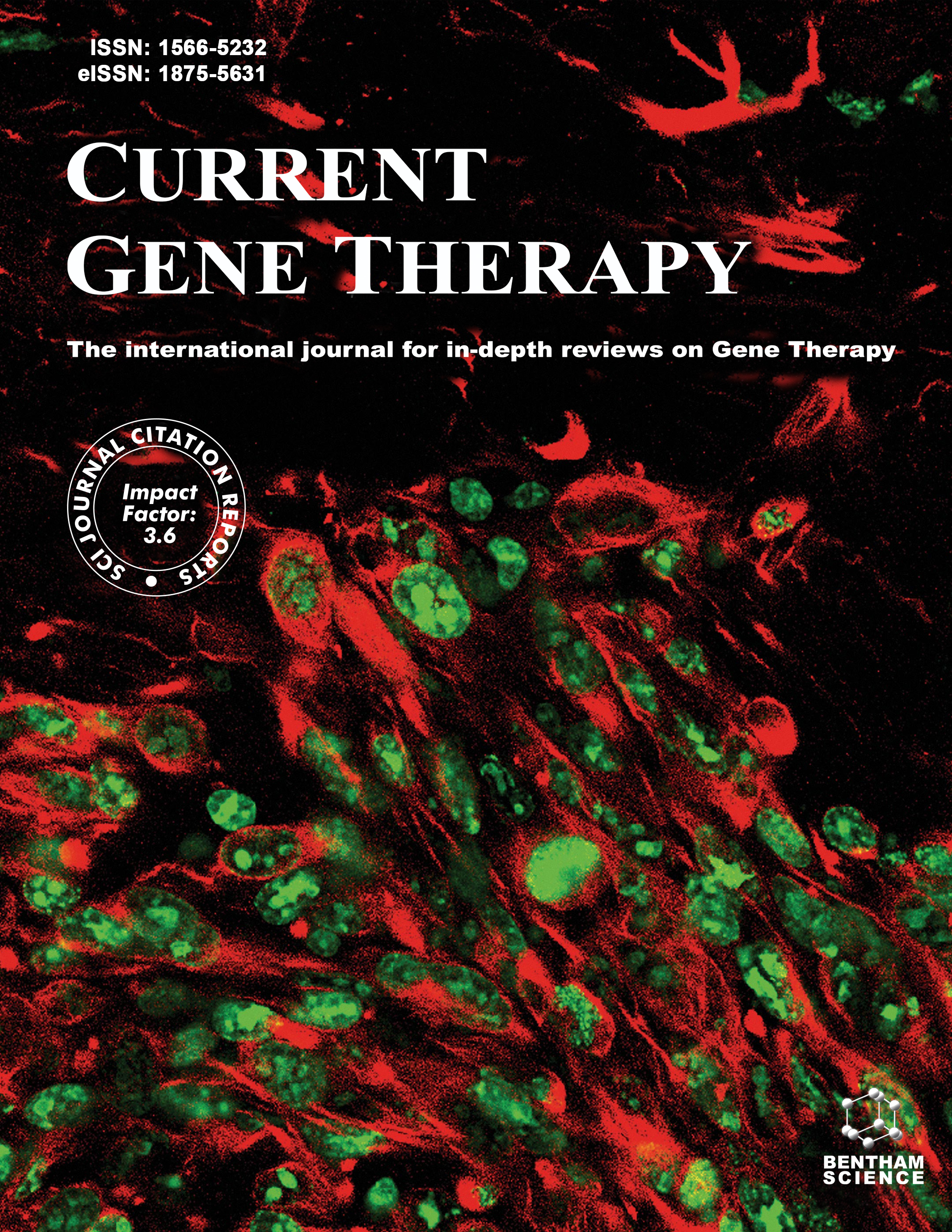- Home
- A-Z Publications
- Current Gene Therapy
- Previous Issues
- Volume 13, Issue 2, 2013
Current Gene Therapy - Volume 13, Issue 2, 2013
Volume 13, Issue 2, 2013
-
-
Technological Overview of iPS Induction from Human Adult Somatic Cells
More LessAuthors: Emilie Bayart and Odile Cohen-HaguenauerThe unlimited proliferation capacity of embryonic stem cells (ESCs) combined with their pluripotent differentiation potential in various lineages raised great interest in both the scientific community and the public at large with hope for future prospects of regenerative medicine. However, since ESCs are derived from human embryos, their use is associated with significant ethical issues preventing broad studies and therape Read More
-
-
-
Embryonic Stem Cells or Induced Pluripotent Stem Cells? A DNA Integrity Perspective
More LessAuthors: Qiang Bai, Romain Desprat, Bernard Klein, Jean-Marc Lemaitre and John De VosInduced pluripotent stem cells (iPSCs) and embryonic stem cells (ESCs) are two types of pluripotent stem cells that hold great promise for biomedical research and medical applications. iPSCs were initially favorably compared to ESCs. This view was first based on ethical arguments (the generation of iPSCs does not require the destruction of an embryo) and on immunological reasons (it is easier to derive patient HLA-mat Read More
-
-
-
Modelling Human Disease with Pluripotent Stem Cells
More LessAuthors: Richard Siller, Sebastian Greenhough, In-Hyun Park and Gareth J. SullivanRecent progress in the field of cellular reprogramming has opened up the doors to a new era of disease modelling, as pluripotent stem cells representing a myriad of genetic diseases can now be produced from patient tissue. These cells can be expanded and differentiated to produce a potentially limitless supply of the affected cell type, which can then be used as a tool to improve understanding of disease mechanisms Read More
-
-
-
Genetically-Modified Human Pluripotent Stem Cells: New Hopes for the Understanding and the Treatment of Neurological Diseases?
More LessAuthors: Stephane Nedelec, Brigitte Onteniente, Marc Peschanski and Cecile MartinatThe fundamental inaccessibility of the human neural cell types affected by neurological disorders prevents their isolation for in vitro studies of disease mechanisms or for drug screening efforts. Pluripotent stem cells represent a new interesting way to generate models of human neurological disorders, explore the physiopathological mechanisms and develop new therapeutic strategies. Disease-specific human em Read More
-
-
-
Human Pluripotent Stem Cells for Modelling Human Liver Diseases and Cell Therapy
More LessAuthors: Noushin Dianat, Clara Steichen, Ludovic Vallier, Anne Weber and Anne Dubart-KupperschmittThe liver is affected by many types of diseases, including metabolic disorders and acute liver failure. Orthotopic liver transplantation (OLT) is currently the only effective treatment for life-threatening liver diseases but transplantation of allogeneic hepatocytes has now become an alternative as it is less invasive than OLT and can be performed repeatedly. However, this approach is hampered by the shortage of org Read More
-
-
-
Direct Somatic Cell Reprogramming: Treatment of Cardiac Diseases
More LessAuthors: Chuner Guo, Kishan Patel and Li QianCardiac diseases are the major causes of morbidity and mortality in the world. Cardiomyocyte death is a common consequence of many types of heart diseases and is usually irreversible. Scar tissues formed by cardiac fibroblasts serve compensatory roles for the injured heart but eventually weaken cardiac function and result in life-threatening heart failures. Unfortunately, adult human hearts have limited regenerative capac Read More
-
-
-
Translating Induced Pluripotent Stem Cells from Bench to Bedside: Application to Retinal Diseases
More LessAuthors: Alona O. Cramer and Robert E. MacLarenInduced pluripotent stem cells (iPSc) are a scientific and medical frontier. Application of reprogrammed somatic cells for clinical trials is in its dawn period; advances in research with animal and human iPSc are paving the way for retinal therapies with the ongoing development of safe animal cell transplantation studies and characterization of patient- specific and disease-specific human iPSc. The retina is an optimal model for inve Read More
-
-
-
Promotion of Cortico-Cerebral Precursors Expansion by Artificial pri-miRNAs Targeted Against the Emx2 Locus
More LessAuthors: Assunta Diodato, Moira Pinzan, Marilena Granzotto and Antonello MallamaciEmx2 encodes for a transcription factor controlling several aspects of cerebral cortex development. Its overexpression promotes self-renewal of young cortico-cerebral precursors, it promotes neuronal rather than gliogenic fates and it protects neuronal progenitors from cell death. These are all key activities for purposes of gene-promoted brain repair. Artificial pri-miRNAs targeting non-coding cis-active modules and/or conser Read More
-
Volumes & issues
-
Volume 25 (2025)
-
Volume 24 (2024)
-
Volume 23 (2023)
-
Volume 22 (2022)
-
Volume 21 (2021)
-
Volume 20 (2020)
-
Volume 19 (2019)
-
Volume 18 (2018)
-
Volume 17 (2017)
-
Volume 16 (2016)
-
Volume 15 (2015)
-
Volume 14 (2014)
-
Volume 13 (2013)
-
Volume 12 (2012)
-
Volume 11 (2011)
-
Volume 10 (2010)
-
Volume 9 (2009)
-
Volume 8 (2008)
-
Volume 7 (2007)
-
Volume 6 (2006)
-
Volume 5 (2005)
-
Volume 4 (2004)
-
Volume 3 (2003)
-
Volume 2 (2002)
-
Volume 1 (2001)
Most Read This Month
Article
content/journals/cgt
Journal
10
5
false
en

Most Cited Most Cited RSS feed
-
-
New Hope for Intervertebral Disc Degeneration: Bone Marrow Mesenchymal Stem Cells and Exosomes Derived from Bone Marrow Mesenchymal Stem Cell Transplantation
Authors: Xiao-bo Zhang, Xiang-yi Chen, Jin Qi, Hai-yu Zhou, Xiao-bing Zhao, Yi-cun Hu, Rui-hao Zhang, De-chen Yu, Xi-dan Gao, Ke-ping Wang and Lin Ma
-
- More Less

